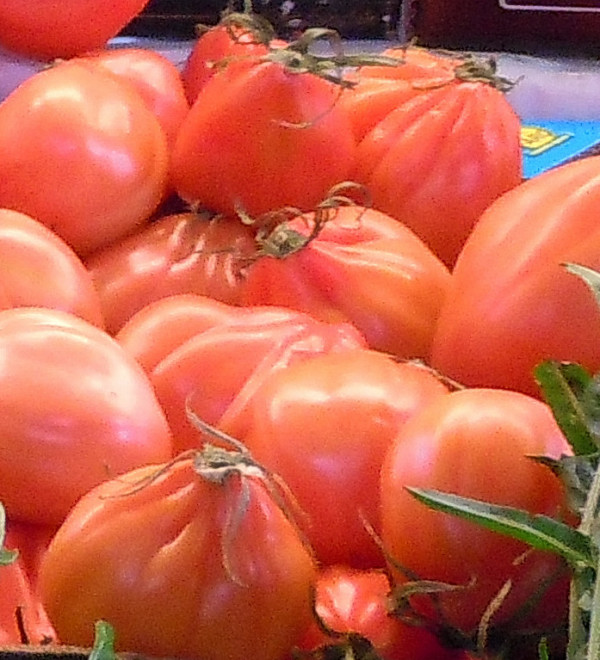Solanum lycopersicum fruit extract is a compound of natural origin obtained from the Tomato, Solanum lycopersicum L. belonging to the Solanaceae botanical family.
The name describes the structure of the ingredient.
- "Solanum Lycopersicum" refers to the scientific name for the tomato, a plant belonging to the Solanaceae family.
- "Fruit" indicates that the extract is derived from the fruit of the Solanum Lycopersicum plant.
- "Extract" indicates that the product is a substance obtained by extracting desired components from the tomato fruit, usually through processes like infusion, decoction, or percolation.
Description of raw materials used in production
- Solanum Lycopersicum Fruits. Commonly known as tomatoes, these fruits belong to the nightshade family and are cultivated extensively around the world. They are rich in vitamins, minerals, antioxidants, and other bioactive compounds.
Step-by-step summary of industrial extraction process
- Harvesting. Tomatoes are harvested when they are ripe to ensure maximum content of beneficial compounds.
- Extraction. The ripe tomatoes are washed, chopped, and subjected to extraction processes. The extraction can be achieved using various solvents or methods depending on the desired constituents.
- Concentration. The extracted liquid is then concentrated to obtain a denser form of the extract.
- Purification. The concentrated extract undergoes purification processes to remove any impurities or unwanted materials.
- Drying. The purified extract is then dried to obtain the final powdered form or can be stored in a liquid medium if desired.

What it is for and where
Cosmetics
Antioxidant agent. Ingredient that counteracts oxidative stress and prevents cell damage. Free radicals, pathological inflammatory processes, reactive nitrogen species and reactive oxygen species are responsible for the ageing process and many diseases caused by oxidation.
CAS 90131-63-8
EC number 290-375-9
Usage
Cosmetic Industry. Tomatoes are rich in antioxidants like lycopene, which are beneficial for skin health. The extract is used in skincare products for its anti-aging, UV-protective, and brightening properties.
Health and Nutrition. Due to its rich antioxidant content, tomato extract is also used as a dietary supplement. It supports cardiovascular health and offers protection against certain environmental aggressors (1).
Research. Ongoing research is being conducted to explore other potential benefits of tomato extracts, especially in relation to their antioxidant properties and their role in preventive health.
Bioactive Compounds
- Lycopene: An antioxidant that gives tomatoes their red color. It has numerous health benefits and is effective against oxidative stress.
- Vitamin C and E: These vitamins play a role in skin health and general immunity.
- Beta-carotene: Another antioxidant that the body can convert into vitamin A.
- Potassium and folate.
References_____________________________________________________________________
(1) Jesuz VA, Elias Campos MB, Rosse de Souza V, Bede TP, Moraes BPT, Silva AR, de Albuquerque CFG, Blondet de Azeredo V, Teodoro AJ. Lycopene and Tomato Sauce Improve Hepatic and Cardiac Cell Biomarkers in Rats. J Med Food. 2019 Nov;22(11):1175-1182. doi: 10.1089/jmf.2019.0014. Epub 2019 Jul 10. PMID: 31290703.
Abstract. This study evaluated the effects of tomato sauce and lycopene on hepatic and cardiac cell biomarkers in rats fed a high-fat diet. Animals were split into five groups: control group, high-fat group (HG), high-fat tomato sauce group, high-fat lycopene 2 mg, and high-fat lycopene 4 mg. Food and water were offered ad libitum, whereas tomato sauce and lycopene (2 and 4 mg/day) were offered daily for 60 days. Body, heart, and liver weights, cardiosomatic and hepatosomatic indices, and serum parameters were also analyzed in rats. The animals' hearts and liver were processed, and cells were examined by flow cytometry. Results showed that the groups receiving tomato sauce and lycopene had lower glycemia. The serum concentration of high-density lipoprotein cholesterol, hepatic enzymes, and tumor necrosis factor-α did not change upon treatment. Tomato sauce and lycopene supplementation did not increase interleukin-1β in response to a high-fat diet. Cell cycle analysis of cardiac and liver cells showed a lower percentage of cells in the G0/G1 phase and an increase in the G2/M phase in HG. Both lycopene and tomato sauce reversed this effect. Both lycopene and tomato sauce reversed this effect and prevented high-fat diet-stimulated cardiac and liver cell death. Supplementation of tomato sauce and lycopene showed beneficial effects on cardiac and liver cell metabolism; therefore, it is suggested as a nutritional approach for the prevention and treatment of cardiovascular diseases and nonalcoholic hepatic steatosis.
![]() Solanum lycopersicum (tomato) fruit extract
Solanum lycopersicum (tomato) fruit extract 

